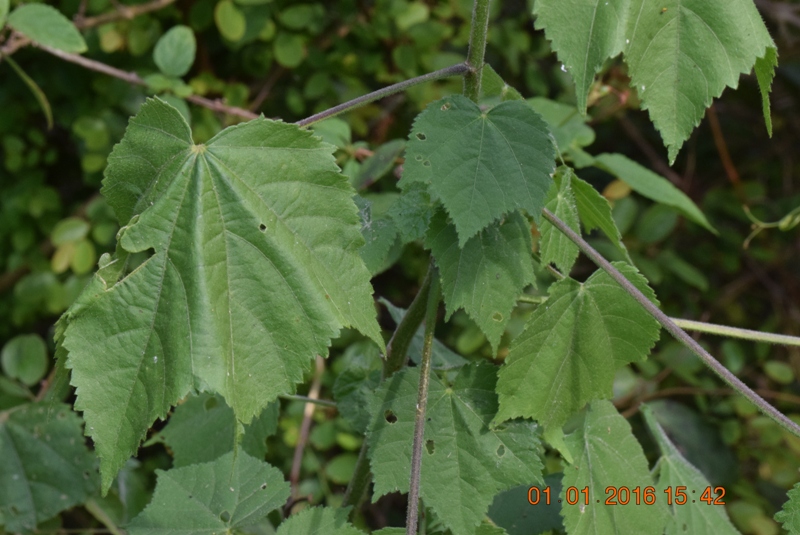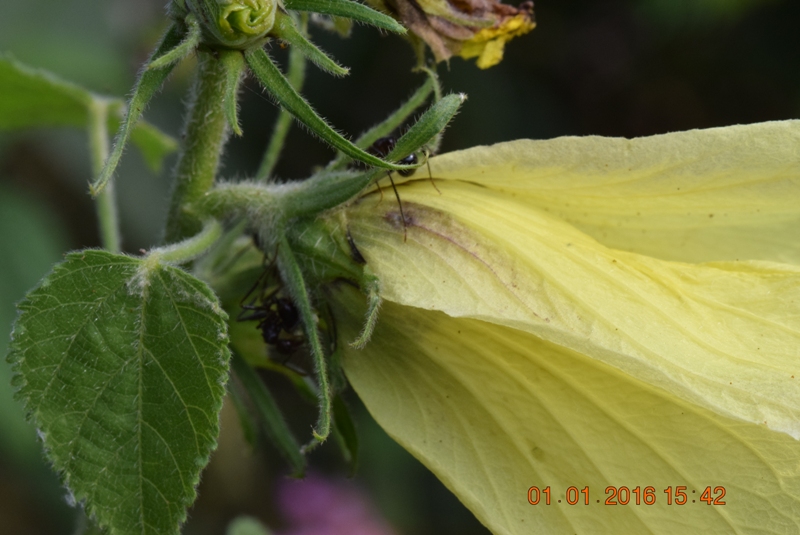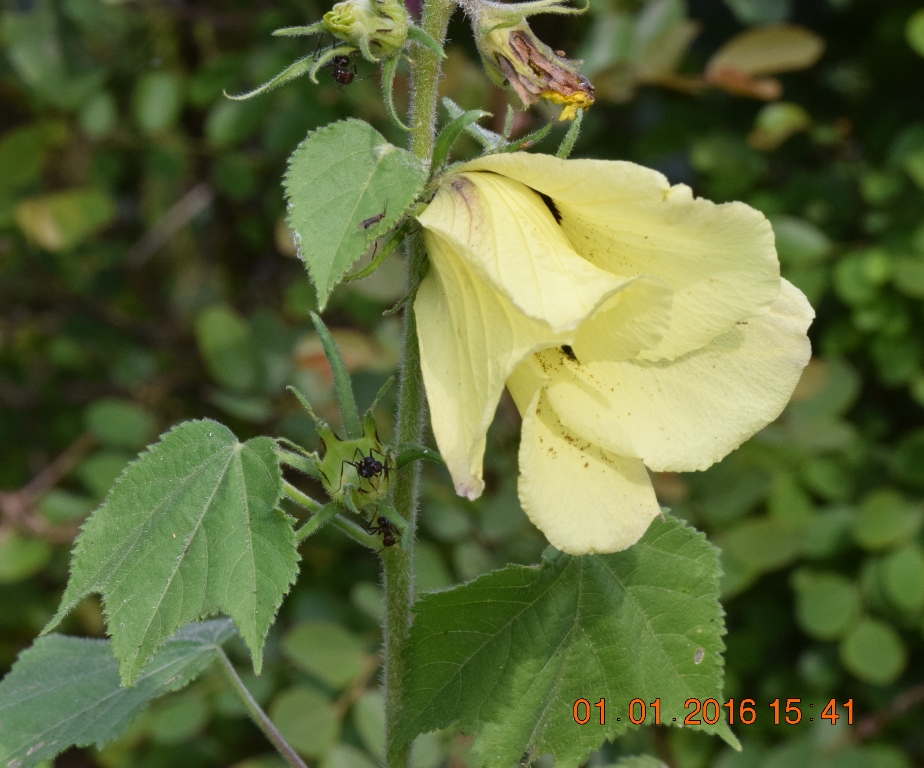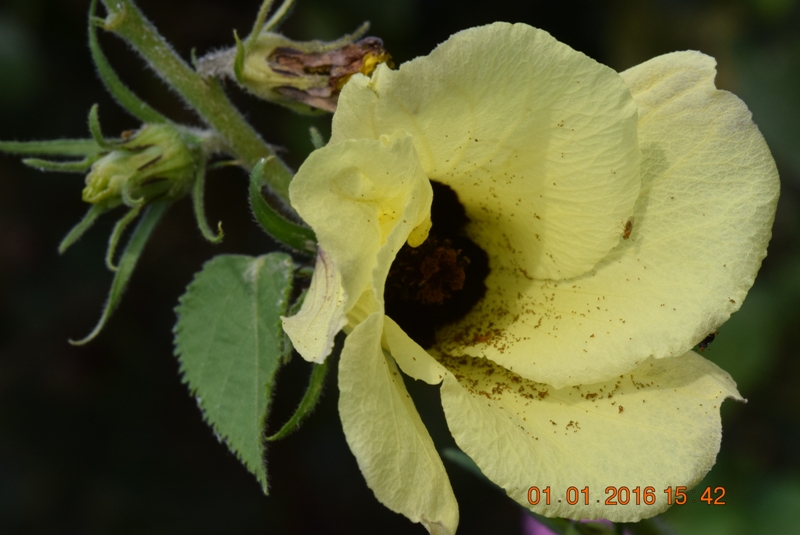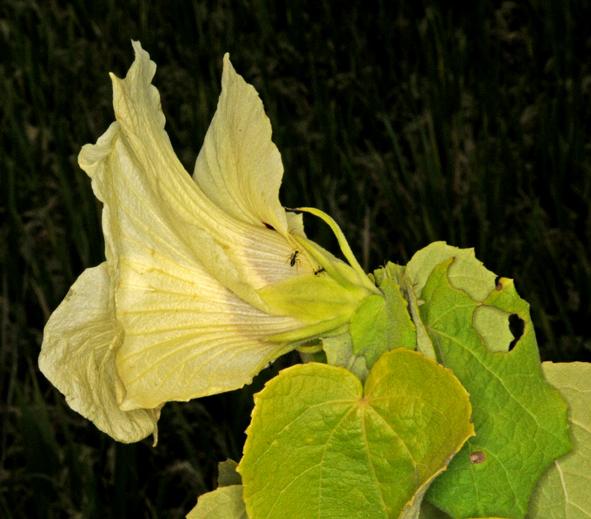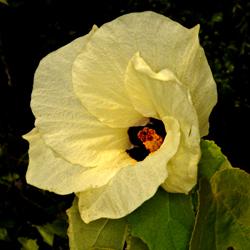|
Hibiscus lunariifolius Willd., Sp. Pl. 3: 811 1800. (syn: Cotyloplecta dongolensis Alef.; Cotyloplecta macrantha Alef.; Hibiscus guineensis G.Don (unresolved); Hibiscus macranthus Hochst. (unresolved); Hibiscus pruriens Roxb. ex DC. (Unresolved); Hibiscus racemosus Lindl. (Unresolved); Hibiscus sidoides Wight & Arn. (Unresolved); Melhania sidoides (Wight & Arn.) Noltie (Unresolved));
Pl help me to identify the enclosed Hibiscus sp.
Shrubby, leaves acutely lobed, upper leaves simple, margin minutely toothed. Peduncle shorted than the pedicel, Bracteoles 5, longer than the calyx, Calyx 5, ovate, acute, 3 nerved, Corolla yellow with brown spot inside.
Possible suggestion: Hibiscus canescens
It was recorded at Yelagiri Hills, a dry deciduous forest area in Vellore District of Tamilnadu on 01-01-2016
Looks like Hibiscus mutabilis. Does the color of the calyx change in the evening?
h mutablis with such dark centre. I don’t think so!!!
Whether it could be Hibiscus lunariifolius Willd. I think it does match with any species in efi so far as per comparative images at Hibiscus
Please check for Abelmoschus sps.
Abelmoschus species in eFloraofindia (with details/ keys from published papers/ regional floras/ FRLHT/ FOI/ Biotik/ efloras/ books etc., where ever available on net) is it hibiscus tiliacious Does not match with images of Hibiscus tiliaceus Photographs show that it may be Hibiscus lunariifolius Willd., a species occurs in Peninsular India. Most likely the plant specimen you have uploaded is Hibiscus hispidissimus which grow always wild Hibiscus hispidissimus Griff. is having epicalyx segments 8-12 and always bifurcated at apex with one part ovate and another part long projecting upwards.
The Hibiscus hispidissimus has 8-12, bracts with leafy appendages, which differs from the post. And hence it may not conform to Hibiscus hispidissimus. The suggestion by Dr. T K Paul, Hibiscus lunariifolius Willd appears to match.
Abelmoschus angulosus Wall ex Wight & Arn,
wild undershrub from Royakota hill of Krishnagiri Dt, Tamilnadu.
Does not matches with images at Abelmoschus angulosus I could not find a match either at Abelmoschus or at Hibiscus as per comparative images. It is Hibiscus lunariifolius Willd., leaves shalowly 3 -5 lobedl margin double serrate; apex acute; epicalyx connate at base, linear; 5; flowers yellow axillary;
Please ID this shrub found on rocky hills in N Karnataka in Oct.
Height 1-2 m, branches terete, glabrous, whitish.
Leaves alternate, 5-10 cm, ovate, acute, irregularly serrate, cordate, 5-7 nerved from base, white tomentose beneath; petioles 3-5 cm, hairy. Flowers on terminal peduncles 5 mm long; calyx 2 cm, lobes 1 cm, ovate, acuminate, ribbed, tomentose, epicalyx 2 cm, linear, alternating with 5 sepals, connate at base; corolla 5-7 cm; fruits not seen.
To me appears close to images at Hibiscus lunariifolius Willd.
References: The Plant List Ver.1.1 |
Hibiscus lunariifolius
Updated on December 24, 2024

